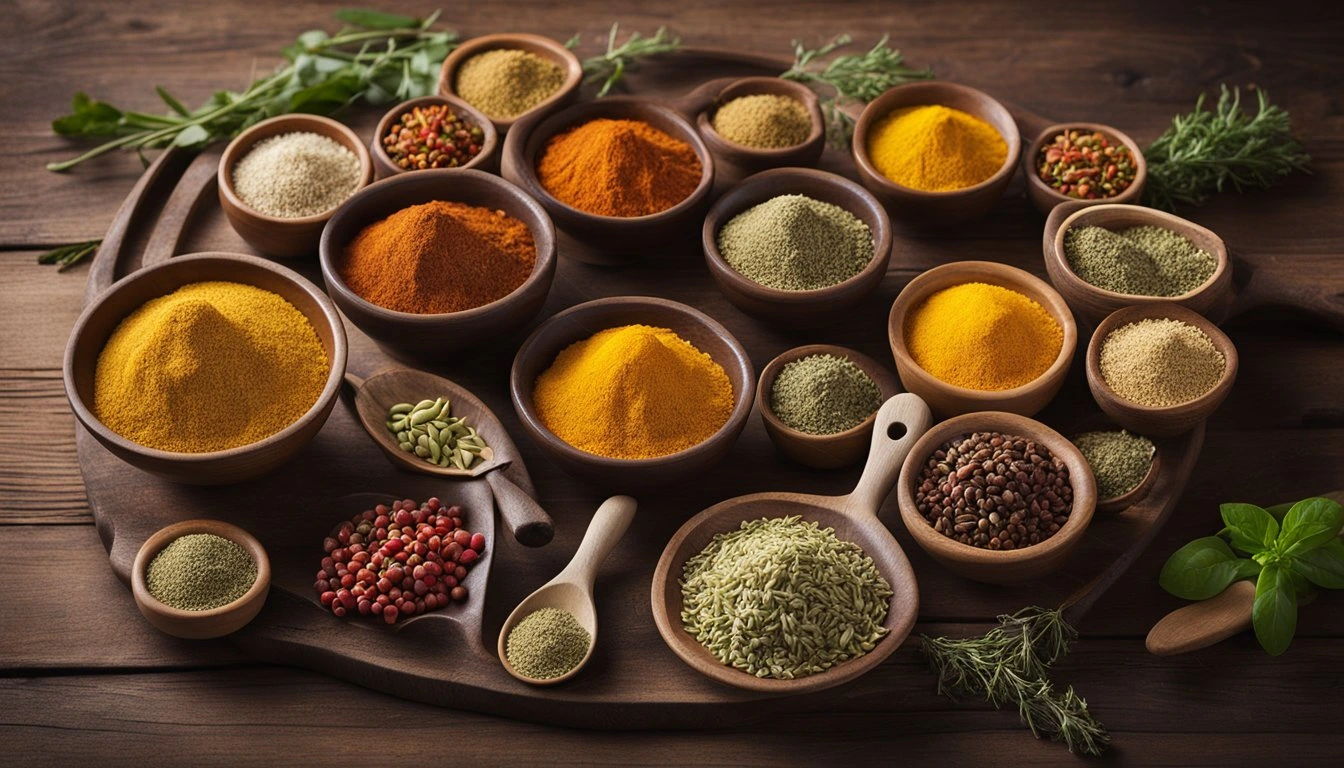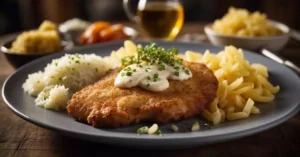Curious about experiencing the distinct taste of German cuisine? What makes German dishes uniquely delightful are the savory spices incorporated into classic recipes. The sweet aroma of nutmeg and the sharp zing of mustard contribute to the rich and intricate flavors of the cuisine, providing an indulgent treat for the taste buds.
Bay leaves, caraway seeds, and juniper berries are among the many commonly used German spices. These herbs and spices are used in many dishes, from hearty stews to delicious sausages. In addition to improving the flavor, German herbs and spices have health benefits. For instance, caraway seeds are believed to aid digestion, and juniper berries were traditionally used to treat various illnesses.
Whether you’re a seasoned chef or someone starting a culinary adventure, German seasonings are a fantastic way to spice up your meals and add variety. In this article, we’ll explore some commonly used German spices, how they’re used in traditional dishes, and their potential health benefits. So grab your apron and get ready to spice up your cooking with a touch of Germany!
History of German Spices
German food culture has an extensive history of using spices to enhance the taste of food. Spices have been utilized in Germany since the Middle Ages to keep food fresh and to add flavor to dishes. They had even been used to mask the flavor of spoiled food.
In the past, spices were a luxurious and pricey commodity. Folks brought them over from distant regions due to their one-of-a-kind and curative attributes. Pepper, cinnamon, and nutmeg were highly favored in Germany at that time.
Later, during the 16th century, German traders began importing spices from the East Indies. As a result, more seasonings became obtainable, and they started to appear more frequently in German culinary recipes. Certain spices, such as caraway, coriander, and mustard, were originally introduced to German cooking during a particular period.
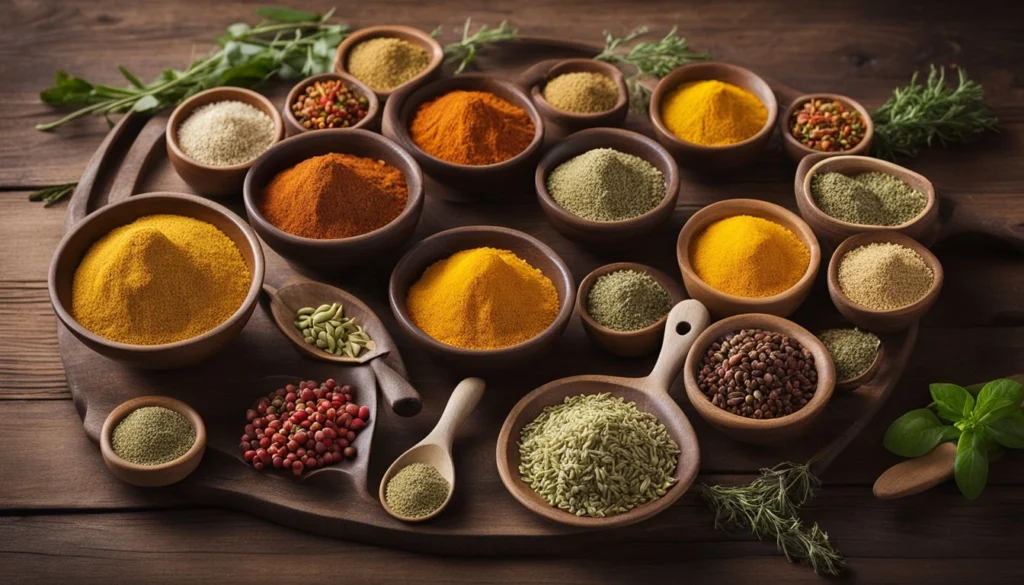
The access to spices during World War II was restricted, resulting in the need to utilize local ingredients and simpler flavors. As a result, the way German cuisine is prepared has changed.
Today, German spices are still significant components of the country’s cuisine. German spices add flavor to many traditional dishes, from the simple blend of caraway seeds and sauerkraut to the use of paprika in schnitzel recipes.
Most Popular German Spices
If you’re looking to add some German flavors to your dishes, you can’t go wrong with these most popular German spices. From caraway to mustard seeds, these spices are widely used in German cuisine and can add a unique and delicious taste to your meals.
Caraway
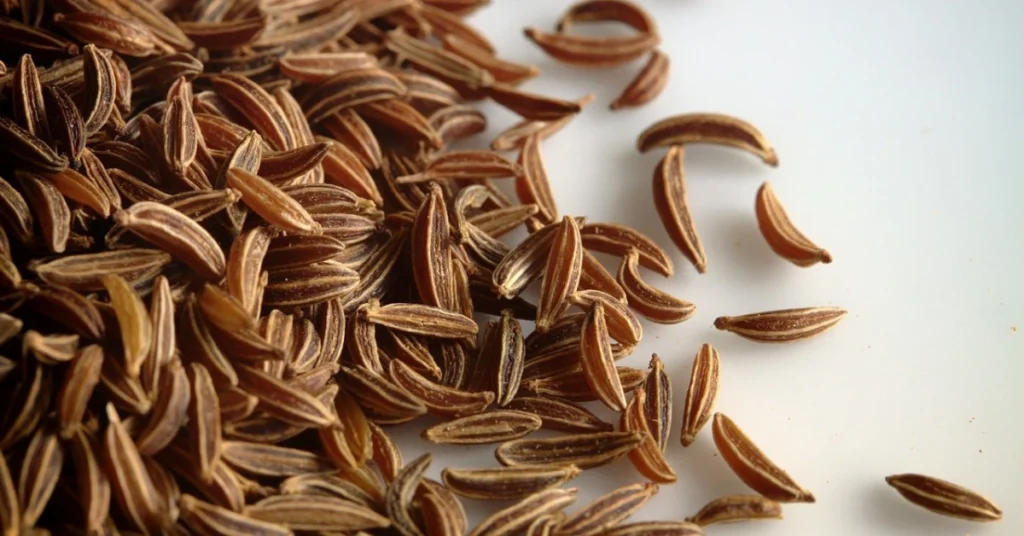
Caraway seeds are a staple in German cooking and are often used in bread, sauerkraut, and potato dishes. They have a distinct earthy taste and are known for their digestive properties, making them a popular addition to heavy or fatty dishes.
Marjoram
Marjoram is a fragrant herb that is similar in taste to oregano but with a slightly sweeter and milder flavor. It is often used in German sausages, stews, and soups, as well as in potato dishes and stuffing.
Bay Leaves

Bay leaves are commonly used in German cuisine to add flavor to soups, stews, and sauces. They have a slightly bitter taste and a strong aroma that can enhance the flavor of any dish.
Juniper Berries
Juniper berries are a key ingredient in German sauerkraut, as well as in marinades for meat dishes. They have a sharp, pine-like taste and are often used to add a unique flavor to game meats like venison.
Mustard Seeds
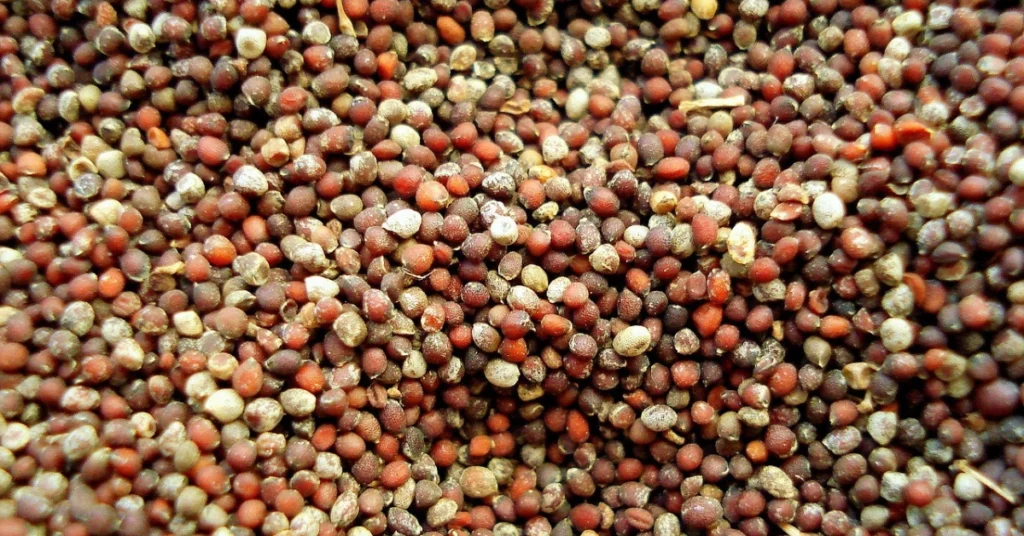
Mustard seeds are a popular spice in German cuisine and are commonly used in mustard sauces, pickles, and sausages. They have a sharp and slightly bitter taste that can enhance the flavor of any dish.
In general, caraway, marjoram, bay leaves, juniper berries, and mustard seeds are among the most popular German spices that can provide a unique and delightful taste to your cooking.
German Spice Blends
If you want to add a genuine German taste to your meals, then you must try German spice blends. These mixes consist of different herbs and spices commonly used in German dishes. They work great for seasoning meats, veggies, and other foods.
Bavarian Seasoning
Bavarian seasoning is a popular spice mix frequently used in the southern area of Germany. It’s a combination of herbs and spices, like marjoram, thyme, rosemary, and garlic. This mix is excellent for adding flavor to pork and dishes with potatoes or soups.
Schnitzel Spices

Schnitzel seasoning is a popular mix of herbs and spices used in traditional German cooking. It contains paprika, garlic, and onion powder and is perfect for seasoning pork, chicken, potatoes, and salads.
German spice blends provide an opportunity to add an authentic German flavor to your cooking. If you’re making a traditional German dish or want to experiment with new tastes, give these blends a chance.
Spices in Traditional German Dishes
German spices are an essential part of traditional German cuisine. From sauerbraten to bratwurst, these dishes are full of flavor and aroma thanks to the careful use of spices. In this section, we’ll take a closer look at two classic German dishes and the spices that make them so delicious.
Sauerbraten
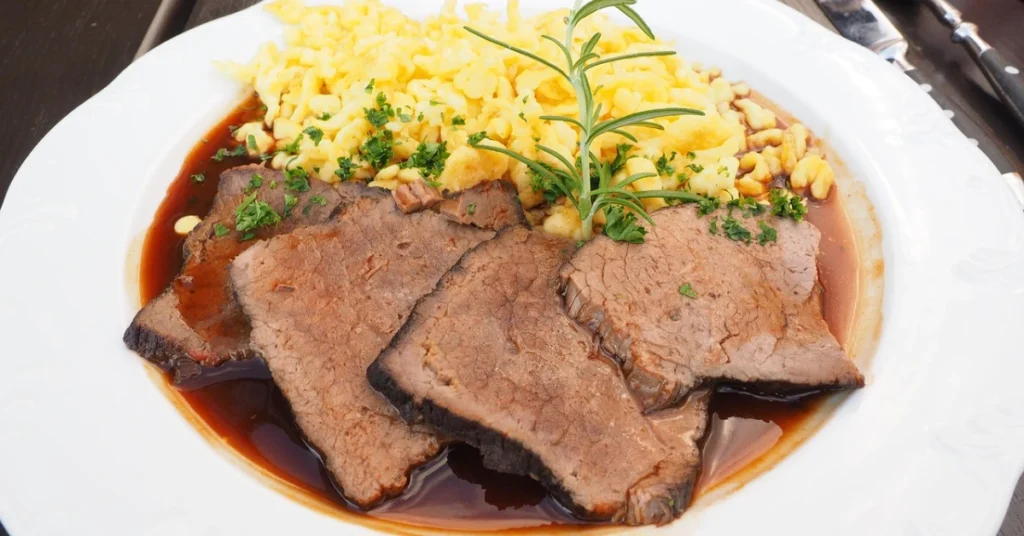
Sauerbraten is a marinated beef roast that is a staple of German cuisine. The meat is marinated in a mixture of vinegar, water, and spices for several days, giving it a tangy and slightly sweet flavor. Here are some of the spices commonly used in sauerbraten:
- Juniper berries
- Cloves
- Bay leaves
- Peppercorns
- Allspice
These spices are added to the marinade and infuse the meat with their unique flavors. The result is a tender and flavorful roast that is perfect for a hearty meal.
Bratwurst
Bratwurst is a type of German sausage that is made from ground pork and spices. Its often used as a snack in Germany at casual meetings. The spices used in bratwurst can vary depending on the region and the recipe, but some of the most common spices include:
- Nutmeg
- Caraway seeds
- Coriander
- Mustard seeds
- Paprika
These spices give bratwurst its distinctive flavor and aroma. Whether grilled, fried, or boiled, bratwurst is a delicious and satisfying meal that is enjoyed throughout Germany.
In conclusion, German spices play a crucial role in traditional German dishes. From the tangy marinade of sauerbraten to the flavorful spices of bratwurst, these dishes are a testament to the rich culinary heritage of Germany.
German Spices in Baking
If you’re a fan of German cuisine, you know that spices play a crucial role in many dishes. But did you know that German spices are also commonly used in baking? In this section, we’ll explore some of the most popular German spices used in baking and how they can add flavor and depth to your favorite treats.
Anise
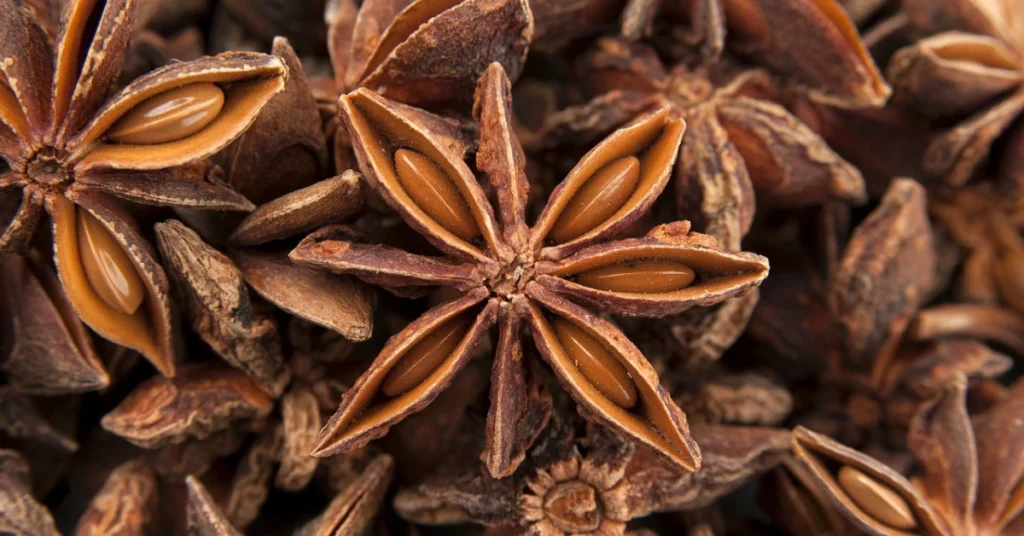
Anise is a popular spice in German baking, especially around the holidays. This sweet and licorice-like spice is often used in gingerbread cookies and other Christmas treats. Anise is also used in traditional German breads like Pumpernickel. It pairs well with cinnamon, nutmeg, and cloves, and can add a unique flavor to your baked goods.
Cinnamon
Cinnamon is a versatile spice used in baking all over the world, but it’s especially popular in German cuisine. In fact, cinnamon is one of the key ingredients in Lebkuchen, a traditional German gingerbread. Cinnamon is also used in German Christmas cookies like Zimtsterne (cinnamon stars) and Spekulatius (spiced cookies). It adds warmth and sweetness to baked goods and pairs well with other spices like nutmeg and ginger.
Nutmeg
Nutmeg is a common spice in German baking, particularly in sweet treats such as cakes and cookies. It has a warm and slightly sweet flavor that pairs nicely with cinnamon and other spices. Germans usually add it to Christmas cookies like Pfeffernüsse and traditional desserts like apple cake (Apfelkuchen). It can also be included in savory dishes like bread and sausage for a distinct and delicious taste.
Ultimately, German spices can enhance the flavor of your baked creations. Next time you’re baking, go ahead and add anise, cinnamon, and nutmeg to your treats, whether it’s gingerbread cookies for the holidays or a classic German cake. These spices can enhance your baking and assist in creating German-themed desserts.
Health Benefits of German Spices
German spices not only add flavor to your dishes but also have several health benefits. Here are some of the health benefits of German spices that you should know about:
Paprika
Paprika is a popular spice in German cuisine that is made from dried and powdered red pepper. It contains capsaicin, a compound that helps to reduce inflammation and pain. Paprika is also rich in antioxidants that help to protect your cells from damage caused by free radicals.
Cardamom
Cardamom is a spice that is commonly used in German baking. It has been shown to have several health benefits, including lowering blood pressure and reducing inflammation in the body. Cardamom is also a good source of antioxidants that can help to protect your cells from damage.
Ginger
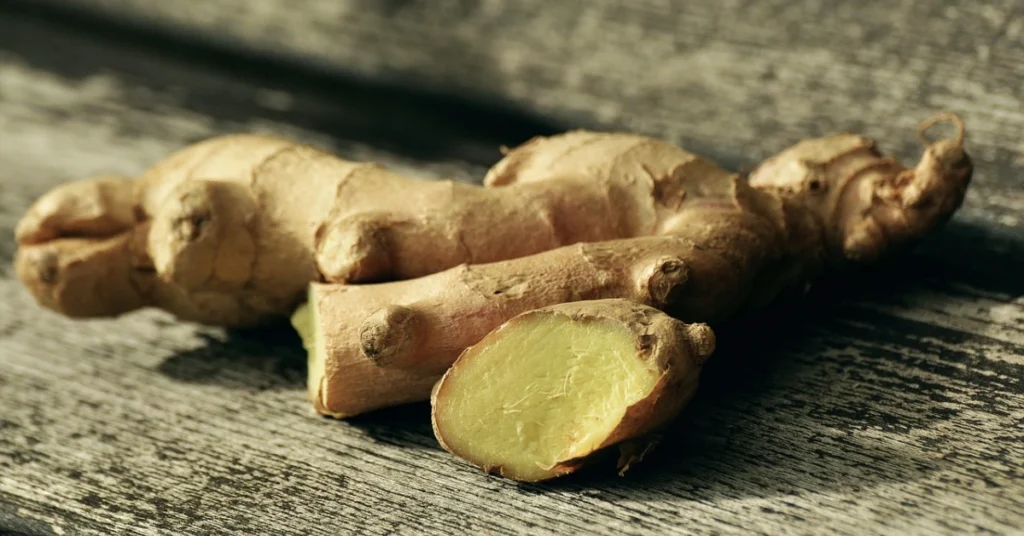
Ginger is a spice that is commonly used in German cuisine to add flavor to dishes. It has been shown to have several health benefits, including reducing inflammation in the body and improving digestion. Ginger is also a good source of antioxidants that can help to protect your cells from damage.
Mustard Seeds
Mustard seeds are a popular spice in German cuisine that are used to add flavor to dishes. They are rich in nutrients like selenium, magnesium, and omega-3 fatty acids that can help to improve heart health and reduce inflammation in the body.
Cumin
Cumin is a common spice used in German cooking. It adds flavor to dishes and may have health benefits, such as reducing inflammation and aiding digestion. Cumin has antioxidants that protect cells from harm.
Adding other German spices to your meals can provide flavor and health advantages. Try different German spices when cooking to find what you like and benefit from their health benefits.
Our conclusion
I bet you can’t wait to buy and try these typical German spices. These spices play a big part in German food culture. The variety can be found in many recipes.
Our insider tip: German cuisine has some outstanding culinary delights to offer, especially at Christmas time. Cardamom and aniseed are used in many recipes. These are our two favorites when it comes to German spices.
FAQ about German Spices
What are the most commonly used spices in German cuisine?
The most commonly used spices in German cuisine are caraway, paprika, nutmeg, and cloves.
What is the difference between curry powder and curry paste?
Curry powder is a blend of several spices, while curry paste is a mixture of ground spices and other ingredients like garlic, ginger, and chili peppers.
What is the best way to store spices?
Spices should be stored in a cool, dry place away from direct sunlight and moisture. They should also be kept in airtight containers to maintain their flavor and potency.
Fast forward to the end of this post, we thank you for your precious time and would like to ask you to leave us a comment down below to tell us about your experience with German Spices.

